How do you treat a good cerebral infarction?
The first two professors spoke very plainly and comprehensively about the treatment of cerebral infarction.
I'm going to discuss the word "cured" a bit more. I'm not sure if by cured you mean fully recovered to normal? Unfortunately, cerebral infarction is a highly disabling disease. Most of the patients will have more or less residual effects.
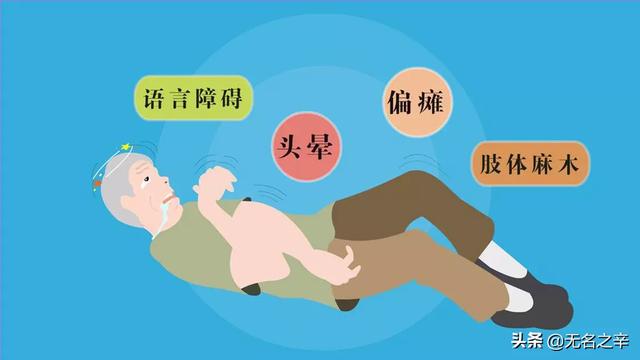
The key to the treatment of cerebral infarction is time. If the time is very short, such as 3-6 hours, within 24 hours, thrombolysis can be considered, intervention and other conventional means of endovascular recanalization, the patient's prognosis may be better, and even leave no sequelae. But unfortunately, the proportion of patients with cerebral infarction who receive thrombolysis or thrombolysis in the ultra-early stage is still very low in China.
Of course, it is just possible that there will be no sequelae after thrombolysis and thrombolysis. We must not ignore the objective feature of high disability rate of cerebral infarction. The majority of patients may be left with more obvious sequelae.
This is what most of the cerebral infarction patients and their families find hard to accept. Suddenly, a person who has a good head on his shoulders can't speak clearly, can't hold chopsticks in his hand, and can't walk well. The less severe cases will only slightly affect their daily life, and it will be a little bit inconvenient for them to take care of themselves. If the disease is more serious, the patient may be paralyzed in bed. The patients themselves are desperate just to think about it.
As I always tell my patients, there is no effective way to deal with the sequelae and disability of cerebral infarction at the current level of medical care in the whole world. We can only do our best and listen to God's will.
The degree of recovery from limb dysfunction due to cerebral infarction is inextricably linked to the patient's rehabilitation. Take notes and tap the board.
Rehab! Rehab! Rehab!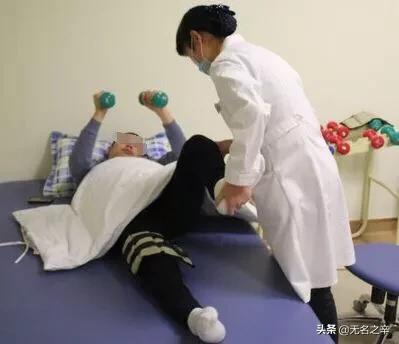
Hospitals and regions that have the conditions must allow patients to get professional rehabilitation doctor's treatment and guidance after a brain attack. Missing the early golden period of rehabilitation training and then basically talking about recovery is bullshit.
If there is no exercise done in the rehabilitation department or stroke unit. Families and patients must have the realization at home that the more you move, the more recovery you will have. Assuming, of course, that the patient's personal safety and cardiopulmonary and other basics are still tolerable.
The rest is antiplate drugs, and lipid regulating drugs should never be cut off!
Adherence to annual physical examinations to control several of the most common risk factors for patients with cerebral infarction in China: hypertension, diabetes, hyperlipidemia, smoking, obesity, and lack of exercise.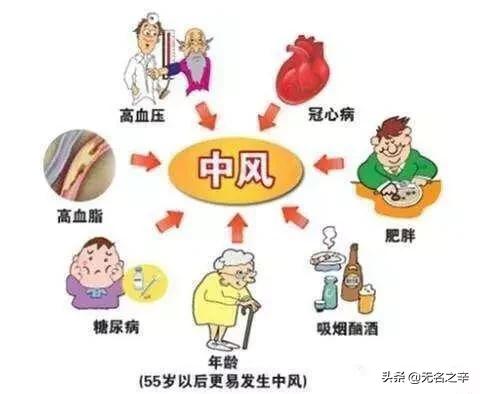
Oh, and one last thing, the most important thing about a brain attack, if it happens again, make sure you get to the hospital first thing.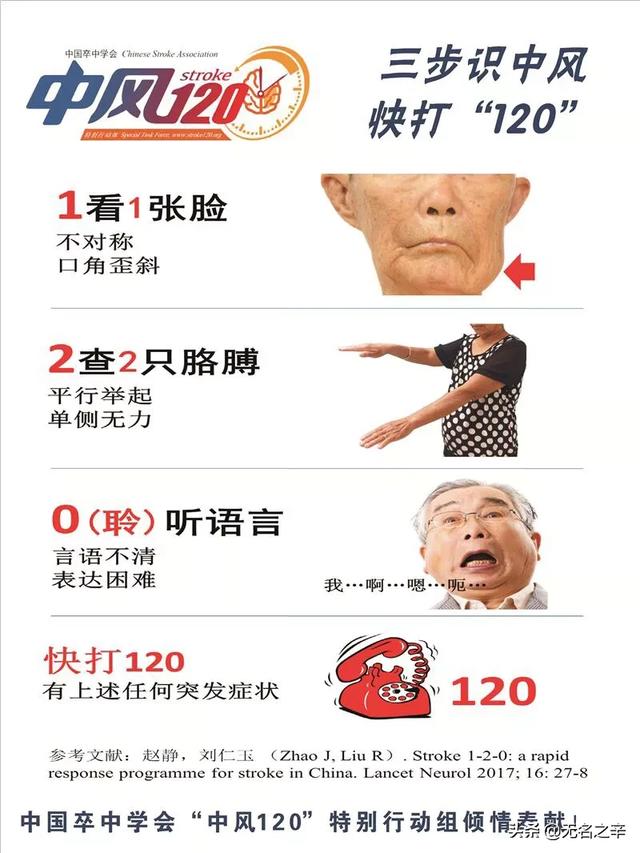
(All images from internet search)
The treatment of cerebral infarction can be categorized into acute and chronic phase. In the hyperacute phase of cerebral infarction, or ischemic stroke, we can usually take intravenous thrombolysis or arterial catheter thrombolysis. If the time window for intravenous thrombolysis or arterial catheterization is exceeded, we usually take general medication, which is often referred to as vasodilatation, activation of blood stasis, and antiplatelet therapy. One month after the cerebral infarction, we can perform cerebral angiography, and if it is found that the cerebral infarction is caused by cerebral stenosis, some patients can take stenting treatment.
Cerebral infarction is a chronic disease caused by multiple etiological factors, in addition to diet and exercise and scientific care, only by adhering to the reliable use of medication and timely standardized rehabilitation diagnosis and treatment, can the symptoms be effectively improved.
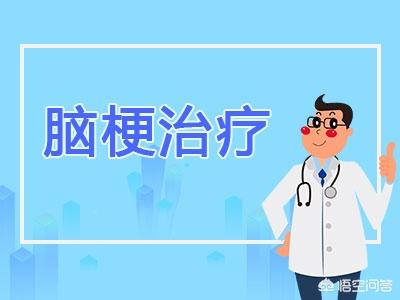
The principle of cerebral infarction treatment is:After the onset of the disease to scramble to the hospital rescue treatment, the sooner the better, the faster the better, this is the most critical point in the treatment of cerebral infarction, treatment:
Ultra-early treatment, i.e. within 4.5 hours of onset, can be applied with thrombolytic drugs. For example, urokinase-streptokinase, alteplase and so on. After more than 4.5 hours into the acute phase, can be applied to scavenging free radicals, such as edaravone, improve microcirculation, such as prostaglandin, and the application of antiplatelet aggregation drugs, such as aspirin, as well as plaque stabilizing drugs, such as statins.
In the acute phase, most patients can be treated satisfactorily if managed appropriately.
If the treatment is not timely or early failed to carry out a good comprehensive treatment, cerebral infarction patients with sequelae is inevitable, in order to avoid the serious consequences, after the acute stage should be started as soon as possible after the exercise of neurological function, to reduce the rate of disability.
After cerebral infarction, more or less sequelae will remain, so it is recommended to go to the regular hospital in time to adhere to the rehabilitation treatment. Clinically, it is generally believed that within half a year after the onset of the disease, especially in the first three months, is the best period for functional recovery, and is also the golden period for rehabilitation training. More than half a year of the disease into the sequelae of the period, the changes in the efficacy of rehabilitation may become slow, but does not mean that there is no effect, as long as the adherence to rehabilitation, will certainly be good, and must not be impatient, to maintain a calm state of mind, so as to be conducive to recovery.
Note that after rehabilitation and discharge from the hospital in daily life should also adhere to exercise, should adhere to some good habits, to prevent the recurrence of cerebral infarction.
Preventive measures: (1) maintain a relaxed mood; (2) exercise in moderation; (3) reasonable nutrition; (4) work and rest regularly; (5) quit smoking and limit alcohol; (6) treatment of existing diseases, such as diabetes mellitus, high blood cholesterol, high pressure disease, and so on.
The clinical management of patients with cerebral infarction is staged.
It is possible that many ordinary people do not have the concept of stages of treatment, but in reality the focus is different at different times.
Acute attack of cerebral infarction risk factor is extremely high, if not timely rescue treatment, then the chance of death is very large, the faster the better, the treatment at this time is mainly based on thrombolysis, thrombus extraction, intervention, the purpose is to quickly recanalization of blood vessels.
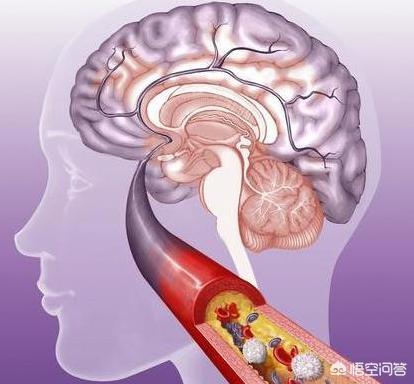
Treatment of the chronic phase!
Theoretically, as long as treatment can be provided at the beginning of the acute attack period, the subsequent risks can be completely avoided. However, in reality, the vast majority of patients with cerebral infarction are unable to be treated at the first time of the acute attack period, and therefore will be left with a number of sequelae, which is what countless people have come to know about cerebral infarction.
Cerebral infarction patients have more kinds of sequelae (vision loss, hearing loss, big change of character, crooked mouth and eyes, facial paralysis aphasia, hemiplegia paralysis, etc.), which is very much related to the location and degree of cerebral infarction, the later the rescue time, the greater the degree and area of regional tissue necrosis, which is non-renewable, and therefore the treatment is more difficult.
For this group of patients, do not blindly take medication, drugs will not allow you to restore the lost function, this time the treatment is equally divided into time:
1,Patients within 6 months can take some functional training, with the help of family members to actively carry out a moderate amount of exercise, can achieve twice the result with half the effort, the purpose is to allow the surrounding cellular tissues to compensate.
2,Patients after 6 months, although still need to adhere to the functional training, but at this time the effect has been gradually reduced, and will get worse with time, should be neuromodulation therapy, through the activation of the dormant cells and tissues to wake up to compensate (replacement), to restore the loss of limb function.
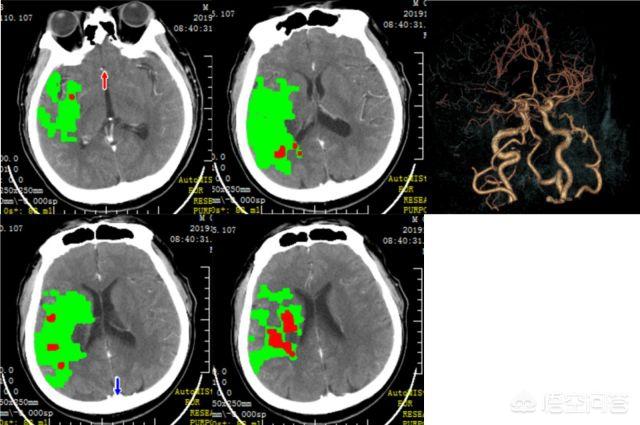
What do I need to be aware of?
1, speed: any treatment should not be hesitant, whether it is an acute attack or chronic recovery patients, should grasp the time, the earlier the treatment, the better.
2, diet: for patients with cerebral infarction, there are many aspects affecting the condition, but it is never possible to bypass the diet, diet, although it is not a high proportion of the many triggers, but a low-cost basic measures, should pay attention to adhere to.
3, exercise: for the treatment of patients with sequelae of cerebral infarction, regardless of which stage, should adhere to the functional training, which is extremely helpful to the speed of recovery, but need to pay attention to is that can not be brave need to exercise in moderation.
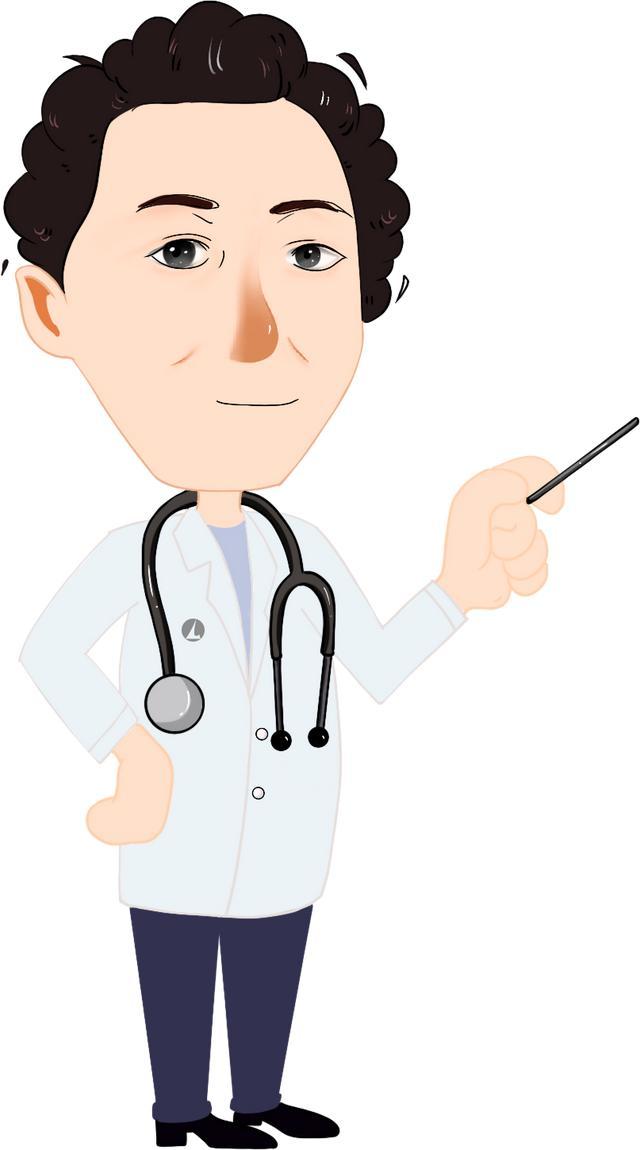
I hope my answer will help you!
If there's anything you don't understand, comment and private message me!
How do you treat a good cerebral infarction?
Cerebral infarction is ischemic stroke. According to the etiology, pathogenesis, clinical type, onset of time, by the doctor's consultation treatment plan, specifically to typing, staging as the core of personalized treatment, so there are general treatment and specific treatment , such as intravenous thrombolysis, antiplatelet therapy and so on. Prevention is better than treatment, and prevention should be the main focus!
Stroke, also known as cerebral stroke, is a group of acute cerebrovascular diseases with ischemic or hemorrhagic injury of brain tissue as the main manifestation of symptoms and signs. As a common neurological disease, stroke is characterized by high morbidity, high mortality, and high disability, which brings a heavy economic burden to families and society.
Stroke influencing factors can be categorized into non-modifiable, modifiable and other potential factors based on their intervention accessibility.
Non-modifiable factors, such as genetic factors. People with a family history of stroke have an increased risk of stroke and increased levels of exposure to influencing factors. Meta-analyses have shown that people with a family history of stroke have a 30% higher risk of stroke than those without a family history. The younger the stroke patient, the greater the risk of stroke in first-degree relatives;

Modifiable factors Hypertension
Hypertension is the most important risk factor for the development of stroke. The effect of blood pressure on stroke has a dose-response relationship and there is no threshold, with a 1.8-fold increase in the risk of stroke for every 10 mmHg increase in systolic or diastolic blood pressure.
diabetes
Diabetes mellitus is also an independent risk factor for IS, with diabetics being three times more likely to develop stroke than non-diabetics; for every 10 years of diabetes, the prevalence of stroke increases by a factor of 2.16, and for every 2% increase in glycosylated hemoglobin, the risk of stroke increases by a factor of two;
Dyslipidemia and obesity
Dyslipidemia has been correlated with the development of stroke, and in the female population, obesity will increase the risk of stroke. However, there is insufficient evidence to show that reduced body mass is an independent protective factor for stroke reduction.
Smoking and alcohol consumption Numerous studies have confirmed that smoking is an independent risk factor for stroke. Smoking is associated with stroke in a dose-inverse
The longer you smoke and the more you smoke, the higher your risk of stroke will be. Prolonged heavy smoking can lead to decreased vasodilatation and accelerated atherosclerosis, thus increasing the risk of stroke.
I am Pharmacist Wang, insisting on spreading knowledge of diseases in simple and easy-to-understand words, and dedicating my own small contribution to a healthy China. If you think my answer is helpful to you, please leave a like! In addition, if you still have related questions, welcome to leave a message, we discuss together!
The general golden treatment for cerebral infarction is within 6 hours of the onset of the disease, and correct and timely treatment can protect as much of the ischemic hemidiaphragm as possible. The treatment of cerebral infarction generally starts from these three:
Improvement of cerebral blood circulation: including thrombolysis, antiplatelet aggregation, anticoagulation, fiber reduction, and volume expansion.
Neuroprotection: Neuroprotectants are theorized to protect brain cells and increase tolerance to ischemia and hypoxia.
Other therapies. Such as butylphthalide to reduce nerve damage and promote recovery of nerve function.
Patients with cerebral infarction should quit smoking and drinking in their lives. In addition, a diet that is too salty and oily and a lack of exercise will increase the prevalence of cerebral infarction.
About this problem first of all in the best golden time, in time to send a doctor to meet a knowledgable doctor less detour in the best time water thrombolysis treatment effect is the best!
Cerebral infarction is a disease with high morbidity, disability, mortality and recurrence. Objectively speaking, a cure for cerebral infarction is almost unattainable, but we don't have to worry too much because there is a conceptual difference between the medical term "cure" and our understanding of "cure".
Different causes of the disease are treated differently.
1. Ultra-early
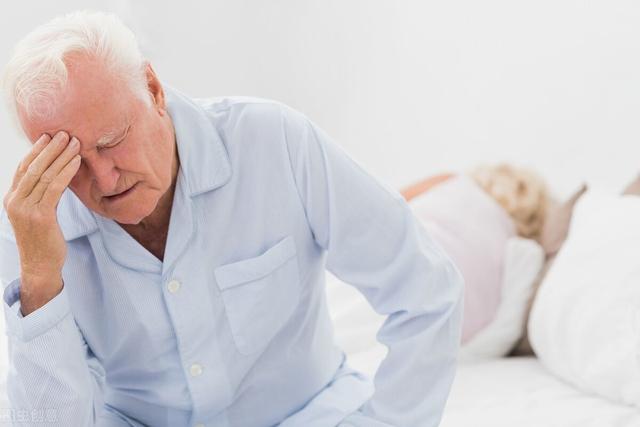
It means that within 3-4.5 hours, the brain nerve cells are not completely dead from ischemia, not more than 3-4.5 hours, (if the onset of the disease is at night, counting from the time of his falling asleep) you can use thrombolysis. The effect is better. Immediate results can be obtained.
2. Acute phase
In the acute stage of treatment, there is no specific drug available, and later mainly rely on their own nerve function compensation, limb function recovery is relatively slow. The treatment in this phase is mainly to prevent further expansion and recurrence of thrombus, eliminate the conditions for thrombus growth, and promote thrombus melting. To maximize the protection of brain nerve cells damaged by ischemia, but not dead brain cells. Drugs and surgery are used depending on the patient's condition.

3. Recovery period
After two to three weeks of treatment, the patient enters the recovery period. It is the more severe cerebral infarction, hemiparesis, aphasia, limb trembling, or restlessness and other neurological functions also began to have some recovery, and with the continuation of time, language, dysphagia, choking on drinking water, and limb function recovery gradually accelerated.
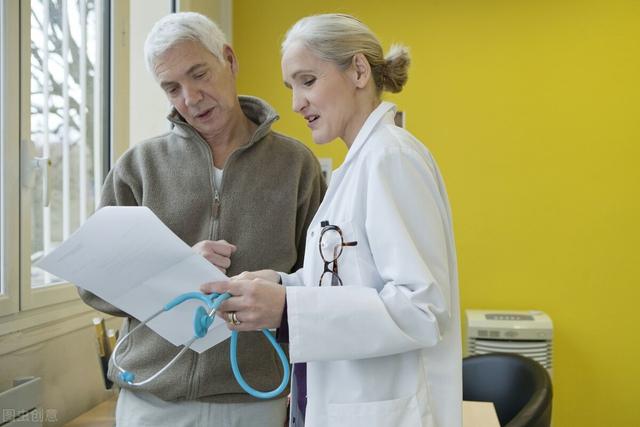
During this period, patients can do limb function rehabilitation training, not to walk more. Rather, it is necessary to start to put the posture, movement correct, strength training, mainly for standing balance and basic muscle strength recovery training. Prevent the deformity of limb function in the future. During this period, the blood pressure can be gradually lowered to 150/90mmHg, and if it can be tolerated, it can be lowered to normal. If there is hemiplegia, it can be treated with traditional Chinese medicine, acupuncture, and rehabilitation training.
Well, aboutHow to treat好Cerebral infarction?That's all I have to share with you, if you find my talk useful and like my science, you can like and retweet it. If you have questions, you can leave a message below. It is not easy to code, you can also follow me yo.
1, most of the patients with cerebral infarction can be treated by activating blood circulation and removing blood stasis. Activating blood circulation and removing blood stasis is the most widely used Chinese medical treatment, which has the effect of anti-atherosclerosis and thrombosis, and can increase cerebral blood flow, which is conducive to the absorption of hematoma and edema around the infarcted lesion, and improves the clinical symptoms, which is not applicable to the treatment of acute stage, but can cure the root cause.
2, the treatment of repairing cerebral nerve period, we all know that the sequelae of cerebral infarction will mainly hurt in the cerebral nerves, and it can not repair the damaged brain cells, and it will be relapsed if it is not timely to pass the embolism. Therefore, traditional Chinese medicine mainly treats with Chinese medicine Hui Tian Tong Luo Granules to repair and nourish the damaged brain nerves, save the dead cells, reduce the scope of cerebral infarction, and combine with 1+2 Brain-Body Dual-Plastic Therapy to treat both symptoms and root causes.
3, aromatic enlightenment treatment, can dredge the meridians and collaterals, regulate qi and blood, clinical treatment of cerebral infarction caused by headache, limb pain is very obvious, choose some aromatic enlightenment of traditional Chinese medicine, such as musk, etc., through the blood-brain barrier, directly to the lesion of the disease to get rid of the disease quickly, and the effect of the treatment is accurate.
In addition, for the sequelae caused by cerebral infarction, Chinese medicine can also be treated with acupuncture, tuina, massage, cupping, physiotherapy and so on.
The treatment of cerebral infarction in Chinese medicine has better clinical efficacy because the causes of cerebral infarction are different for different individuals, such as high blood pressure, high blood sugar and high blood lipids can lead to cerebral infarction symptoms in patients. Some patients with yang deficiency may also cause blood coagulation, thus inducing cerebral infarction.
Some patients are afraid of heat, like to drink cold beverages, often thirsty, and may have red tongue, yellow tongue, hanging and slippery pulse, etc. At this time, it is necessary to use drugs to clear heat, dredge liver qi, shallow yang, nourish the liver and kidneys for treatment.
Cerebral infarction Chinese medicine treatment has better efficacy, but clinicians need to extract the disease's pathogenesis, disease base, clinical manifestations, clinical symptoms, and long-term clinical experience in treating cerebrovascular as a basis in order to bring the potential of Chinese medicine treatment of cerebral infarction into full play.
This question and answer are from the site users, does not represent the position of the site, such as infringement, please contact the administrator to delete.